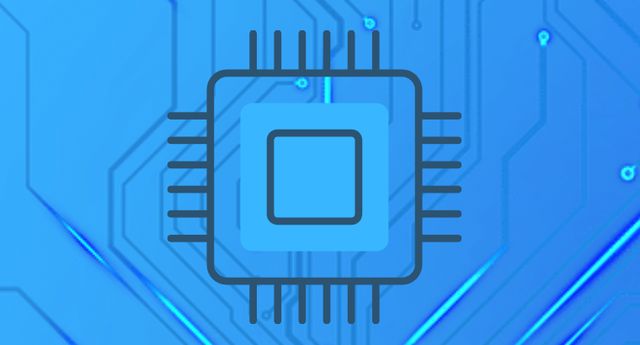Neuralink Explained: Brain-Computer Interfaces & Brainchips
Introduction
As technology rapidly advances, the concept of directly integrating the human brain with computers is becoming increasingly feasible. Neuralink, a pioneering company in this domain, is at the forefront of developing advanced brain-computer interfaces (BCIs). This article explores how Neuralink works, delves into its mission statement, examines its competitors, and provides insights into the broader field of BCIs. Additionally, we address frequently asked questions to help you understand this groundbreaking technology better.
How Does Neuralink Work?
Neuralink employs cutting-edge technology to establish a seamless connection between the human brain and digital devices. Central to this innovation is the brainchip, a sophisticated implant embedded within the brain. This nerve connection utilizes ultra-thin, flexible electrodes to detect and interpret neural signals. These signals are then transmitted to external devices, enabling direct communication between the brain and computers.
The process begins with the insertion of the brainchip through minimally invasive surgical procedures. Once in place, the chip continuously monitors neural activity, translating thoughts and intentions into actionable data. This allows for applications such as controlling prosthetic limbs, restoring sensory functions, and even enhancing cognitive capabilities.
Neuralink Contact
For those interested in reaching out to Neuralink, the company provides multiple channels of communication. You can visit the official Neuralink contact page on their website to find email addresses, phone numbers, and mailing addresses. Additionally, Neuralink maintains active social media profiles where you can stay updated on their latest developments and engage with their community.
Neuralink’s Mission Statement
Neuralink’s mission statement focuses on advancing human potential by merging biological intelligence with artificial intelligence. The company aims to address neurological disorders, enhance cognitive abilities, and ultimately create a symbiotic relationship between humans and machines. By developing sophisticated BCIs, Neuralink aspires to revolutionize healthcare, improve quality of life, and unlock new frontiers of human capability.

Neuralink Competitors
In the burgeoning field of brain-computer interfaces, Neuralink competitors are emerging with their own innovative solutions. Notable among them are:
- Synchron: Specializing in implantable BCIs, Synchron focuses on developing devices that can aid individuals with paralysis by enabling them to control digital devices through thought.
- Kernel: Kernel is dedicated to creating non-invasive BCIs that enhance cognitive functions and provide deeper insights into brain activity.
- BrainCo: This company develops wearable BCIs aimed at improving focus, mental health, and educational outcomes through real-time brain monitoring.
These competitors contribute to a vibrant and competitive market, driving advancements and expanding the possibilities of brain-computer integration.
What Are Brain-Computer Interfaces?
Brain-computer interfaces (BCIs) are systems that facilitate direct communication between the brain and external devices. By decoding neural signals, BCIs enable users to control computers, prosthetics, and other electronic devices using their thoughts. What is brain computer interfaces often leads to exploring their applications, which range from medical treatments for neurological conditions to enhancing human capabilities and creating new modes of interaction with technology.
BCI Applications
The potential applications of BCI apps are vast and varied:
- Medical Rehabilitation: Assisting individuals with spinal cord injuries or neurodegenerative diseases by restoring lost functions.
- Augmented Communication: Enabling those with speech impairments to communicate more effectively through thought-controlled devices.
- Cognitive Enhancement: Enhancing memory, attention, and other cognitive functions to improve learning and productivity.
- Virtual Reality Integration: Creating more immersive virtual environments controlled directly by the user’s brain signals.
Frequently Asked Questions
How Does Neuralink Work?
Neuralink operates by implanting a brainchip that establishes a nerve connection with the brain’s neural networks. This connection allows the chip to read and interpret brain signals, which are then transmitted to external devices for various applications, such as controlling prosthetics or interacting with computers.
What Is a Brain Computer Interface?
A brain-computer interface (BCI) is a technology that enables direct communication between the brain and external devices. BCIs decode neural activity to perform actions like moving a cursor on a screen, controlling a robotic limb, or interacting with software applications without physical movement.
What Is Neuralink’s Mission Statement?
Neuralink’s mission statement focuses on enhancing human potential by integrating the brain with advanced technologies. The company aims to address neurological disorders, improve cognitive functions, and create a harmonious relationship between humans and artificial intelligence.
Who Are Neuralink’s Competitors?
Neuralink competitors include companies like Synchron, Kernel, and BrainCo, all of which are developing their own versions of BCIs with unique approaches and applications. These competitors drive innovation and expand the possibilities within the brain-computer interface industry.
What Is a Brain Computer?
A brain computer refers to the integrated system where the human brain interacts directly with computational devices. This integration enables the translation of neural signals into digital commands, facilitating control over various electronic systems through thought alone.
How Do Neuralink Work Compared to Other BCIs?
Neuralink distinguishes itself through its use of ultra-thin, flexible electrodes and minimally invasive surgical techniques. This allows for more precise and durable nerve connections with reduced risk and discomfort compared to some other BCI technologies. Additionally, Neuralink’s focus on scalability and integration with advanced AI sets it apart in the competitive landscape.
Conclusion
Neuralink represents a significant leap forward in the realm of brain-computer interfaces, offering transformative potential for medicine, human enhancement, and our interaction with technology. By understanding how Neuralink works, exploring its mission, and recognizing its position among competitors, we gain insight into the future of neurotechnology and its profound impact on society. As BCIs continue to evolve, the collaboration between human intelligence and artificial systems promises to unlock unprecedented possibilities.
Share this content:






















Post Comment